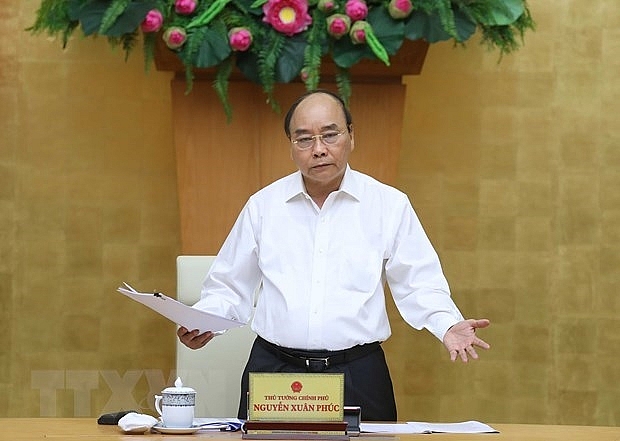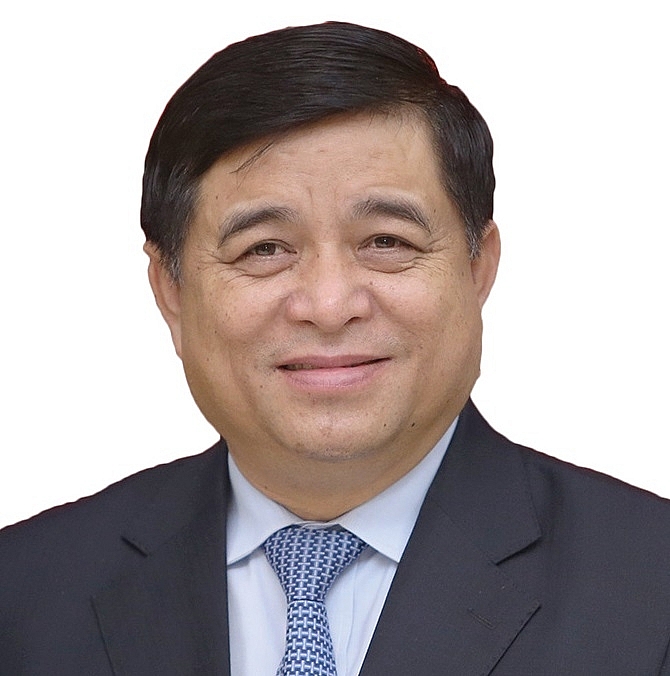Inspection teams tackle public investment pace
 |
| Prime Minister Nguyen Xuan Phuc speaks at the event. Photo: VNA |
Prime Minister Nguyen Xuan Phuc last week led an inspection group working with the southern province of Dong Nai, ordering that a land area of over 1,800 hectares for constructing the first phase of Long Thanh International Airport has to be handed to Airports Corporation of Vietnam, the investor of the project, in October. Currently, the public investment disbursement of a sizable project to build settlement areas for people whose land have been withdrawn and used for constructing the airport remains at a snail’s pace.
A report from the Ministry of Planning and Investment (MPI) on six-month public investment disbursement showed that the resettlement project was given VND18.5 trillion ($804.34 million) as public investment for the 2016-2020 period, including nearly VND18.2 trillion ($791.3 million) during 2018-2020. In a National Assembly resolution released in 2017 on the project, the land revocation, compensation, and assistance in resettlement were to be implemented at once. In April, Dong Nai People’s Committee stated that all the state-financed money for the project will be disbursed completely within 2020.
However, the total disbursed sum was VND1.83 trillion ($79.56 million) as of July 17, hitting only 10.1 per cent of the assigned plan, said the MPI report. “Thus the rate of public investment disbursement of the project remains at a very low level, making it difficult for completing site clearance, handing over land, and finishing all the given capital as Dong Nai has committed and as the National Assembly assigned,” read the report.
But Dong Nai authorities said that in the second half of 2020, it will try to complete all activities about site clearance and handing over of part of land to investors to build the $16 billion Long Thanh airport. Investment in the first phase of Long Thanh is set to cost almost VND111.69 trillion ($4.86 billion). Construction is scheduled to begin next year and be completed in 2025.
PM Phuc has established seven inspection teams that will work with provincial authorities and ministries to seek solutions to accelerate public investment as the disbursement rate has lagged behind the schedule for 2020. Along with Long Thanh, hundreds of other projects will also be inspected. These teams will be headed by the prime minister, four deputy prime ministers, and ministers of finance, and planning and investment. The teams will work until the end of August to inspect and deal with the obstacles facing state-funded projects and expedite their capital disbursement. They must report the results to the prime minister within seven days of the conclusion of inspection.
According to the Ministry of Finance, in 2020 about VND633 trillion ($27.5 billion) worth of public investment must be disbursed by year’s end. This sum includes VND470.6 trillion ($20.46 billion) assigned for 2020 and VND162.4 trillion ($7 billion) transferred to 2020 from 2019.
However, in the first half of 2020, the disbursed sum was VND159.34 trillion ($6.93 billion), hitting 33.9 per cent of the initial plan, with only three ministries and nine localities reporting disbursement rates of over 50 per cent.
“We must eradicate stagnancy in public investment disbursement currently negatively affecting economic growth,” PM Phuc said at last week’s conference on boosting such disbursement in Ho Chi Minh City where the rate was 45.18 per cent of the assigned VND41.7 trillion ($1.8 billion) as of July 15. “Anyone violating regulation on waste of state assets, embezzlement, and corruption are to face strict punishments,” he continued. “All efforts must be made to completely disburse all public investment capital in 2020. Ministries and localities must report on the progress of public investment disbursement every two weeks.”
| Nguyen Chi Dung - Minister of Planning and Investment
There are six objective causes behind slow-paced public investment disbursement. Firstly, some ministries, central agencies, and localities remain slow in enacting unit price and standards for specialised activities used as a foundation for determining total investment capital, construction estimates, and other costs stipulated in Decree No.68/2019/ND-CP dated August 2019 on managing construction investment costs. Secondly, some regulations between Decree 68 and its guiding circular are inconsistent, making it difficult to implement projects. Next, regulations on dealing with public land stuck at the projects and public assets in site clearance for state-funded projects remains problematic. Also, there have not been any specific regulations on legal foundations and documents for financial agencies to conduct state budget revenue and spending accounts on the value of public assets. Fifthly, projects with capital from official development assistance (ODA) and concessional loans from foreign donors are heavily hurt by COVID-19 as almost all activities are related to importing machines and equipment using foreign experts and contractors, as well as supervisors. Lastly, regulations on revising investment policies for ODA-backed projects in Decree No.56/2020/ND-CP released in May on managing and using ODA and concessional loans of foreign donors are being applied commonly to all ODD-backed projects. This has caused difficulties for different projects. However, there are also three subjective causes behind slow-paced public disbursement. Firstly, plan-making is not in line with the realities and the availability of capital and disbursement ability. Secondly, many ministries and localities are not so interested in boosting such disbursement, with the lack of transparency in site clearance and compensation. Finally, the causes of slow disbursement of ODA-funded projects are various, with many projects having to have their procedures revised. |
What the stars mean:
★ Poor ★ ★ Promising ★★★ Good ★★★★ Very good ★★★★★ Exceptional
Related Contents
Latest News
More News
- PM orders investment model for North–South high-speed rail (December 22, 2025 | 17:43)
- First members of Danang International Finance Centre revealed (December 22, 2025 | 17:39)
- Securing capital and efficiency for Vietnam’s 2026-2030 growth ambitions (December 17, 2025 | 10:00)
- Driving double-digit growth through green and circular transformation in Vietnam (December 17, 2025 | 09:00)
- Vietnam bucking trend in the global M&A landscape (December 16, 2025 | 14:20)
- Vietnam’s green transition demands collective financial action (December 15, 2025 | 12:00)
- VIR workshop highlights capital and policy for sustainable development (December 15, 2025 | 11:00)
- National Assembly approves pilot mechanisms to accelerate major projects in Hanoi (December 12, 2025 | 11:29)
- Vietnam eases policy approval requirements, simplifies foreign and outbound investments (December 11, 2025 | 17:53)
- Unpacking new momentum in Vietnam’s M&A market (December 10, 2025 | 09:59)


 Tag:
Tag:





















 Mobile Version
Mobile Version